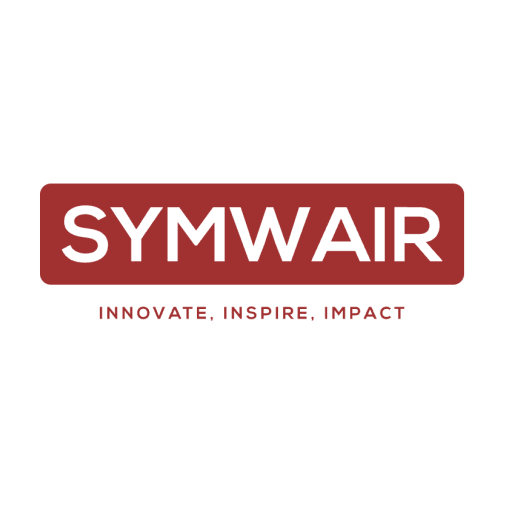In an era where speed and adaptability are paramount, organizations need solutions that streamline digital transformation without sacrificing quality or governance. Netgrif, a process-aware low-code platform, offers a unique blend of business process modeling and rapid application development, empowering both developers and domain experts to co-create powerful enterprise applications.
What is Netgrif?
Netgrif is a low-code application development platform built around the principle of process-driven design. It enables the modeling, automation, and continuous improvement of business processes by allowing users to define workflows, rules, and data structures in a unified environment. Unlike many traditional low-code tools, Netgrif embeds executable BPMN and dynamic forms directly into the development process, making it a powerful option for organizations with complex or evolving business needs.
Key Features of Netgrif
1. Process-Centric Application Design
Netgrif integrates BPMN (Business Process Model and Notation) as a core concept, making business processes first-class citizens in the application lifecycle. This allows process owners to visually design workflows and logic, which the system then executes directly — eliminating the gap between process modeling and implementation.
2. Dynamic Forms and User Interfaces
Applications built with Netgrif use dynamically generated forms based on process models. This ensures that interfaces are always in sync with business logic and can evolve without manual redesign, offering true agility for process updates and iterations.
3. Role-Based Task Management
Netgrif comes with built-in task management capabilities where roles and responsibilities are tightly coupled with the underlying process logic. This ensures that the right tasks reach the right people, while maintaining traceability and compliance — crucial for industries like finance, insurance, and healthcare.
4. Reusable Components and Templates
With Netgrif, developers and analysts can create reusable templates for forms, actions, or even entire workflows. This accelerates development and ensures consistency across enterprise applications, especially in environments with recurring process patterns.
5. Seamless Integration and Open Standards
Netgrif supports integration with external systems via REST APIs and offers data interoperability through open standards. This makes it easy to embed Netgrif-based apps into existing IT landscapes, without vendor lock-in.
6. Process Monitoring and Analytics
The platform provides built-in monitoring tools that track process execution in real time. Stakeholders can view KPIs, bottlenecks, and deviations directly, empowering data-driven decisions and continuous process improvement.
7. Cloud-Native with On-Prem Options
Netgrif offers deployment flexibility: it can run in the cloud, on-premise, or in hybrid environments. This allows organizations to meet their infrastructure, security, or compliance requirements without compromise.
Use Cases Across Industries
Organizations use Netgrif to digitize and automate a wide range of processes — from HR onboarding and legal contract management to public sector case handling and customer service workflows. For example, a leading private health insurance company leveraged Netgrif to digitize and automate its request processing for changes in health insurance. What was previously a manually intensive and error-prone process became a fully digital, process-driven workflow. The solution not only reduced administrative burden and turnaround time, but also ensured compliance with regulatory requirements and provided full transparency across every step of the process. By integrating task management, dynamic forms, and BPMN-based workflows, Netgrif enabled the insurer to deliver faster, more reliable service to its clients while significantly cutting operational costs.
Frequently Asked Questions (FAQ)
How does Netgrif differ from traditional low-code platforms?
Unlike many traditional low-code tools, Netgrif embeds executable BPMN and dynamic forms into the development process, allowing for a seamless transition from process modeling to implementation. This approach ensures that business processes are central to application design, facilitating better alignment between business and IT.
Who can benefit from using Netgrif?
Netgrif is ideal for organizations that require automation of complex, rule-driven processes with full visibility and control. It’s particularly beneficial for industries like finance, insurance, healthcare, and the public sector, where compliance, traceability, and adaptability are crucial.
Can you provide an example of Netgrif in action?
Yes. A leading private health insurance company utilized Netgrif to digitize and automate its request processing for changes in health insurance. The implementation transformed a manually intensive process into a fully digital workflow, reducing administrative burden, ensuring compliance, and providing transparency throughout the process.
How does Netgrif support integration with existing systems?
Netgrif supports integration with external systems via REST APIs and adheres to open standards for data interoperability. This ensures that Netgrif-based applications can be embedded into existing IT landscapes without vendor lock-in. Smart Workflow Automation & Innovation+1Reddit+1
What deployment options are available with Netgrif?
Netgrif offers flexible deployment options, including cloud-native, on-premise, and hybrid environments. This flexibility allows organizations to meet their specific infrastructure, security, and compliance requirements.
How does Netgrif facilitate continuous process improvement?
Netgrif provides built-in monitoring tools that track process execution in real time. Stakeholders can view key performance indicators (KPIs), identify bottlenecks, and detect deviations directly, enabling data-driven decisions and continuous process improvement.
Conclusion – Why Choose Netgrif?
Netgrif isn’t just another low-code tool – it’s a process-aware development platform that aligns business and IT from day one. It’s particularly well-suited for organizations that need to automate complex, rule-driven processes with full visibility and control. By enabling rapid prototyping, iterative improvements, and strong governance, Netgrif empowers teams to deliver enterprise-grade applications faster and smarter.

